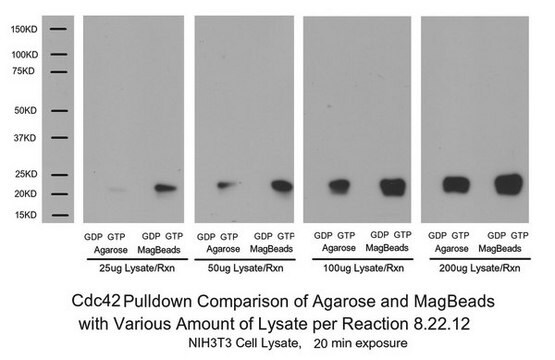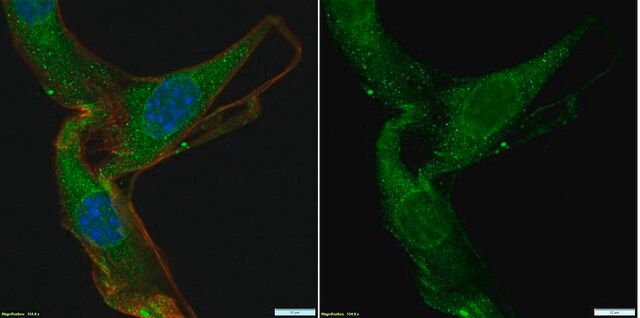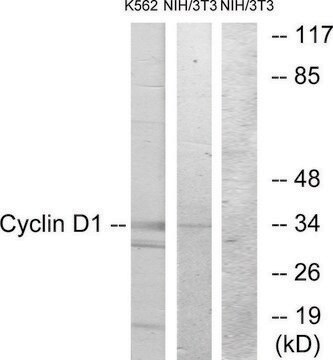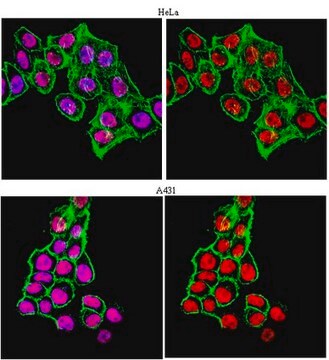ABN1653
Anti-Dysbindin
from rabbit, purified by affinity chromatography
Synonym(e):
Biogenesis of lysosome-related organelles complex 1 subunit 8, BLOC-1 subunit 8, Dysbindin-1, Dystrobrevin-binding protein 1, Hermansky-Pudlak syndrome 7 protein, HPS7 protein
About This Item
Empfohlene Produkte
Biologische Quelle
rabbit
Qualitätsniveau
Antikörperform
affinity isolated antibody
Antikörper-Produkttyp
primary antibodies
Klon
polyclonal
Aufgereinigt durch
affinity chromatography
Speziesreaktivität
human, mouse, rat
Methode(n)
immunocytochemistry: suitable
immunofluorescence: suitable
immunohistochemistry: suitable (paraffin)
immunoprecipitation (IP): suitable
western blot: suitable
NCBI-Hinterlegungsnummer
UniProt-Hinterlegungsnummer
Versandbedingung
ambient
Posttranslationale Modifikation Target
unmodified
Angaben zum Gen
human ... DTNBP1(84062)
Allgemeine Beschreibung
Spezifität
Immunogen
Anwendung
Neurowissenschaft
Immunohistochemistry Analysis: A representative lot detected Dysbindin in Immunohistochemistry applications (Ito, H., et. al. (2010). Mol Psychiatry. 15(10):976-86).
Immunofluorescence Analysis: A 1,000 dilution from a representative lot detected Dysbindin in P8 mouse brain hippocampus tissue (Courtesy of Dr Koh-ichi Nagata at Aichi Human Service Center).
Immunoprecipitation Analysis: A representative lot detected Dysbindin in Immunoprecipitation applications (Ito, H., et. al. (2010). Mol Psychiatry. 15(10):976-86).
Immunocytochemistry Analysis: A representative lot detected Dysbindin in Immunocytochemistry applications (Yuan, Q., et. al. (2016). Biol Psychiatry. 80(4):312-22).
Western Blotting Analysis: A representative lot detected Dysbindin in Western Blotting applications (Lee, S.A., et. al. (2015). J Biol Chem. 290(11):7087-96).
Immunoprecipitation Analysis: A representative lot detected Dysbindin in Immunoprecipitation applications (Lee, S.A., et. al. (2015). J Biol Chem. 290(11):7087-96).
Western Blotting Analysis: A representative lot detected Dysbindin in Western Blotting applications (Ito, H., et. al. (2010). Mol Psychiatry. 15(10):976-86).
Immunocytochemistry Analysis: A representative lot detected Dysbindin in Immunocytochemistry applications (Ito, H., et. al. (2010). Mol Psychiatry. 15(10):976-86).
Qualität
Immunohistochemistry Analysis: A 1:250 dilution of this antibody detected Dysbindin in human cerebellum tissue.
Zielbeschreibung
Verlinkung
Physikalische Form
Lagerung und Haltbarkeit
Sonstige Hinweise
Haftungsausschluss
Sie haben nicht das passende Produkt gefunden?
Probieren Sie unser Produkt-Auswahlhilfe. aus.
Lagerklassenschlüssel
12 - Non Combustible Liquids
WGK
WGK 2
Flammpunkt (°F)
Not applicable
Flammpunkt (°C)
Not applicable
Analysenzertifikate (COA)
Suchen Sie nach Analysenzertifikate (COA), indem Sie die Lot-/Chargennummer des Produkts eingeben. Lot- und Chargennummern sind auf dem Produktetikett hinter den Wörtern ‘Lot’ oder ‘Batch’ (Lot oder Charge) zu finden.
Besitzen Sie dieses Produkt bereits?
In der Dokumentenbibliothek finden Sie die Dokumentation zu den Produkten, die Sie kürzlich erworben haben.
Unser Team von Wissenschaftlern verfügt über Erfahrung in allen Forschungsbereichen einschließlich Life Science, Materialwissenschaften, chemischer Synthese, Chromatographie, Analytik und vielen mehr..
Setzen Sie sich mit dem technischen Dienst in Verbindung.








